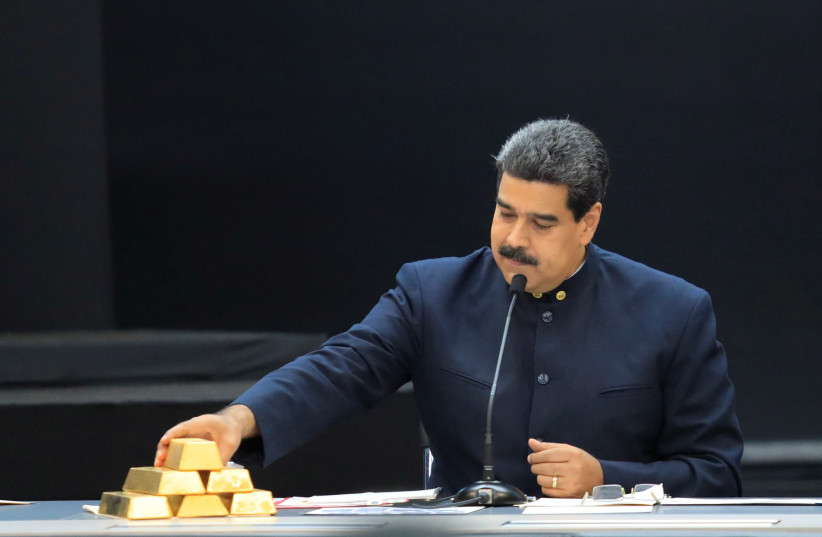Understanding the Iranian threat across Latin America - opinion

Approaching the 28th anniversary of the Buenos Aires AMIA Jewish Center bombing
In June 2019, 73 tons of gold from Venezuela were sent to the Middle East. According to reports investigated by the Simon Wiesenthal Center, they may have included ingots of “Zahngold,” Jewish teeth fillings, torn from Holocaust corpses’ mouths while their bodies were moved from the gas chambers to the crematoria.
The Wiesenthal Center was also investigating whether the gold ingots were being sent from post-war Germany, through several South American ports for passage to Argentina, in order to support Odessa, the supposed network of Nazi fugitives intent on “building a Fourth Reich.”
According to a Wall Street Journal article of 2019, the gold that had been kept in Caracas, was used by Venezuelan President Nicolas Maduro to maintain his regime in dire need of currency. A stopover before the gold’s final destination - in the Middle East - was reportedly the African Gold Refinery (AGR) plant in Entebbe, Uganda, where the ingots were processed and lost trace of their origin.
On another track, the Isla Margarita – a Caribbean paradise just off the Venezuelan coast – had become an Arab family playground, but also a safe haven for para-militia training camps.
An intent was also posited that Iran was to sell Fajr rockets to Venezuela - capable of endangering neighboring Colombia and the near Caribbean – and then raise the stakes with a batch of anti-aircraft and longer-range missiles that could ultimately threaten the region’s air traffic and potentially reach Florida. The deal was reportedly in exchange for Venezuelan uranium, needed by Iran to fuel its nuclear program.
Under presidents Chavez to Maduro, growing waves of migrants and refugees fled Venezuela to adjacent countries. The local Jewish community, though drastically reduced in size, is still subject to antisemitic harassment.
A short while ago, Iran signed an agreement with Caracas to provide refined oil – as oil-rich Venezuela has a dysfunctional refinery infrastructure – followed up this past week with Maduro’s visit to Tehran. The new 20-year agreement includes cooperation in the fields of energy and petrochemical industry, tourism and cultural exchanges, a defense a deal set to bypass the US sanctions imposed on both countries.
Of great relevance are also the apparently anodyne regular flights between Tehran and Caracas.
The late Alberto Nisman, an Argentine prosecutor for the AMIA bombing of July 1994, revealed Iran’s complicity in the affair. The terror attack took the lives of 85 people, and wounded over 300 people.
In 2015, Nisman was found dead in his apartment just hours before he was to present evidence against the then-president Cristina Kirchner for ignoring and covering up Iran’s involvement in the bombing.
We view Nisman as the 86th victim.
At a 2015 dinner in London, a few weeks before his murder, he showed us proof of Tehran’s operational network across South America – including the IRGC foreign intelligence Quds Force sleeper cells, as well as Hezbollah operatives. Since then, this network has significantly increased in size, becoming the object of greater media and governmental attention across the Americas.
In 2013, the Argentine government had signed a memorandum with Iran, that would have exonerated six AMIA bombing suspects.
After Simon Wiesenthal’s came forward with information, Interpol placed the Iranian suspects traveling abroad under international Red Notices (international arrest warrants) in order to be detained and extradited for trial in Buenos Aires. The Investigative Project on Terrorism has since discovered Iranian “Aeroterror” flights across Latin America.
The security minister of Argentina, Anibal Fernandez, a longtime friend of the Wiesenthal Center, stopped a Venezuelan aircraft and detained the passports of five Iranians of the IRGC intelligence division. One was liaison to Hezbollah, now solidly entrenched across the continent. Another is a relative of Iranian Interior Minister Ahmad Vahidi, who is one of the six people sought by Interpol for the AMIA bombing.
Latin American countries must be vigilant regarding Iranian terror, as we approach the 28th anniversary of the AMIA massacre.
Shimon Samuels is director for International Relations and Ariel Gelblung is director for Latin America at the Simon Wiesenthal Center.
Jerusalem Post Store
`; document.getElementById("linkPremium").innerHTML = cont; var divWithLink = document.getElementById("premium-link"); if (divWithLink !== null && divWithLink !== 'undefined') { divWithLink.style.border = "solid 1px #cb0f3e"; divWithLink.style.textAlign = "center"; divWithLink.style.marginBottom = "15px"; divWithLink.style.marginTop = "15px"; divWithLink.style.width = "100%"; divWithLink.style.backgroundColor = "#122952"; divWithLink.style.color = "#ffffff"; divWithLink.style.lineHeight = "1.5"; } } (function (v, i) { });

